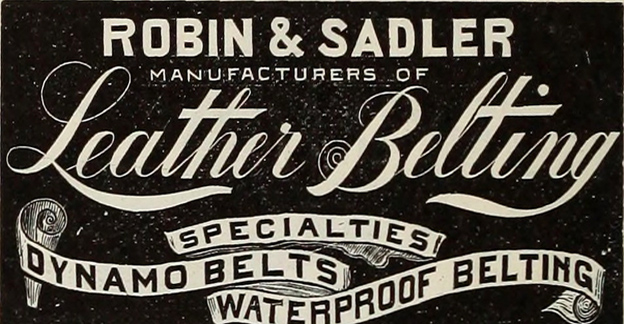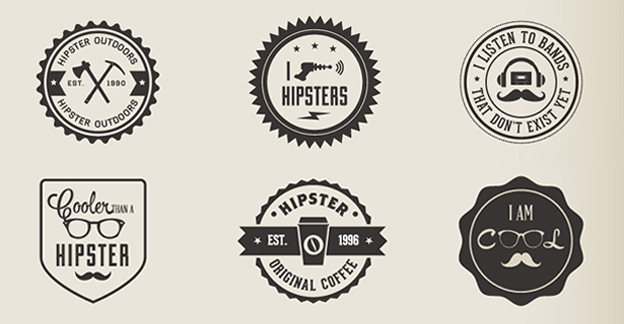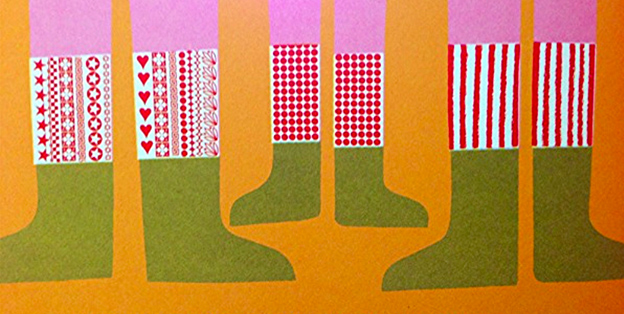Every single great designer was a trendsetter. Assuming you want to be more than just another average designer whose designs are unidentifiable, you need to move beyond the trends.
In a recent article I wrote, “Why you are not a famous designer“, I outlined some of the ways in which the famous designers we all know and love separated themselves from the crowd. Some key points from that article include tapping into your personality and being unafraid to be a revolutionary thinker. Think like a design trendsetter!
1. Design needs a way to evolve

Internet Archive Book Images (via Flickr)
Without trendsetters, design has no way to grow. When stuck in a trend, graphic design becomes a dog chasing its tail – never going anywhere. This thought is saddening when evolution brings change, which is refreshing and exciting. For me, the constant process of changing and evolving is really what makes it all worth it. It’s like breathing fresh air.
Without evolution, design would still look exactly like it did in the late 1800s (featured above). While these early designs are amazing in their own right, they have no place in design today and I’m certainly glad design has moved on. It’s nice to think that every day brings forth new and exciting looks.
Don’t be afraid to exist on the frontier of design evolution!
2. Following trends isn’t much fun

Free hipster badges (via xoo.me)
When following trends, you are essentially a computer operator – a person who executes computer commands without true creative thought. While this certainly might count as a career, it is not improvisational. It is not innovative and, most importantly, it is not all that fun.
Take the hipster logo trend, for example. If your job was to insert company names into the templates featured above, that would get boring pretty quick. For example, take how designer Tim Delger created the wildly popular 2013 The Hipster Logo Design Guide. Delger highlights the fact that there is no artistic integrity in creating hipster logos – it’s simply a formula. Following the same formula over and over is not fun.
Design is a medium that embraces creativity and welcomes wild artistic exploration. It’s in that creative and wild exploration that design actually becomes fun. Set it free!
3. Setting yourself apart can bring more clients

Childrens’ Book Design: Saul Bass
When seeking design work, clients are faced with thousands of options. If you don’t set yourself apart in one way or another, there’s no way you will be commissioned or even inquired about.
Clients need a style and a personality to latch onto during their often expansive search for designers. Think about really letting your unique qualities shine through in both your work and the way you communicate, so that you can catch the eye of potential clients.
4. Design doesn’t need to be competitive

Design: Bradbury Thompson
A world of trendy designers is a competitive one. By following trends, everyone is doing very similar things. This can increase competition and cause tension between designers in the quest for clients and work.
But this tension doesn’t need to exist. Let clients who like your style hire you for what you provide. If it’s not for them, that is OK. Let them go. There’s always more clients that might specifically need your help.
Designer Bradbury Thompson (featured above) was completely in his own world with the way he used color. There was no competition for him because there was no other work to compare it to at the time. He did not offer hipster logos or trendy looks to his clients because they did not come to him for trendy looks. They came to him for his unique approach to design and color.
5. Keeping up with trends is exhausting and time-consuming

Designs: Josef Muller-Brockmann
Sure, you can look up a blog post of trend predictions. This might help you better understand where you sit in the design world, for example. However, truly keeping up with trends and the nuances of popular design involves constantly scanning the internet for new design companies and work, then parsing through additional research to formulate popular trends. This is a huge time commitment that could otherwise be spent on your own creative work and explorations.
Continue reading %9 Ways That Design Trends Are Holding You Back%
Source: SitePoint
